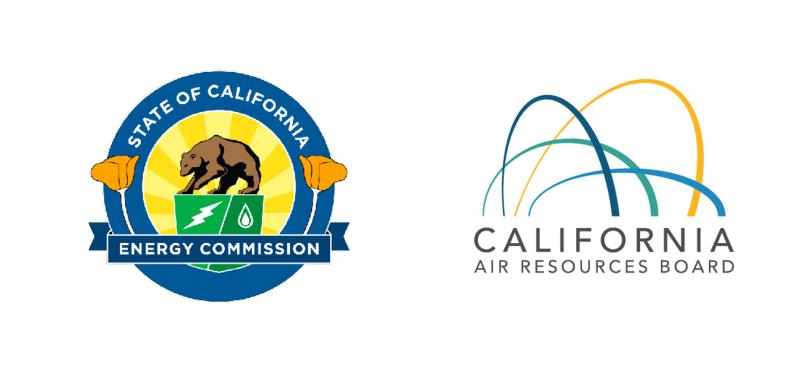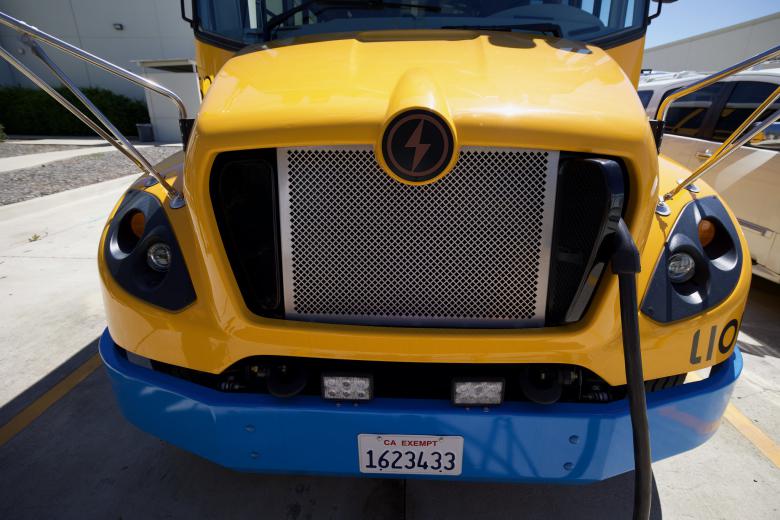For Immediate Release: July 7, 2023
State investments are helping schools buy zero-emission school buses and needed charging infrastructure with grants of up to $495,000 per bus for vehicle and infrastructure costs
SACRAMENTO — Applications are now available for $150 million allocated in the state budget to support California public school districts in their efforts to transition toward zero-emission bus technology and help pay for related infrastructure needs.
The effort is a collaboration between the California Air Resources Board (CARB) and the California Energy Commission (CEC). Applications will be accepted through Sept. 29, and award recipients can receive up to $395,000 to replace older, fossil fuel-powered buses with zero-emission options, in addition to up to $100,000 per bus to purchase and install associated charging equipment.
The latest application period marks the second year of the Hybrid and Zero-Emission Truck and Bus Voucher Incentive Project (HVIP) Public School Bus Set-Aside program, which is an effort to replace aging buses with zero-emission technology. Zero-emission school buses play a key role in California’s efforts to achieve carbon neutrality by 2045 and help protect children who are particularly vulnerable to the health impacts from diesel exhaust. Last year, the project helped 81 school districts purchase more than 300 zero-emission buses.
Infrastructure is a key component of zero-emission transportation, and CARB partners with CEC’s Energy Infrastructure Incentives for Zero-Emission Commercial Vehicles Project (EnergIIZE) to provide funding for needs such as charging stations. Options include vehicle-to-grid technology capable of using the batteries on board the buses to send power back to the grid when demand is high.
Eligible applicants include:
- Public school districts.
- Public charter schools.
- Joint power authorities.
- County offices of education.
- The Division of State Special Schools of the California Department of Education.
All eligible applicants must be in a small- or medium-sized air district. The program prioritizes applicants located in low-income and disadvantaged communities in small and medium air districts that have historically had limited access to funding for investments in zero-emission transportation. Award winners will be required to scrap an old school bus for every new bus purchased.
To apply or for more information, visit California HVIP.
Eligible applicants should be prepared to provide the following at the time of application:
- Letter of intent
- A copy of the California Department of Motor Vehicles registration for each old school bus that they plan to scrap
- Preliminary information regarding existing and planned charging infrastructure
Photos of Cajon Valley Union VGI Electric School Buses are available to view on the CEC's Flickr account.
###
About the California Energy Commission
The California Energy Commission is the state's primary energy policy and planning agency. It has seven core responsibilities: advancing state energy policy, encouraging energy efficiency, certifying thermal power plants, investing in energy innovation, developing renewable energy, transforming transportation, and preparing for energy emergencies.
About the California Air Resources Board
CARB's mission is to promote and protect public health, welfare, and ecological resources through effective reduction of air pollutants while recognizing and considering effects on the economy. CARB is the lead agency for climate change programs and oversees all air pollution control efforts in California to attain and maintain health-based air quality standards.
Newsroom
Media Contact
Media and Public Communications Office
MediaOffice@energy.ca.gov
(916) 654-4989


